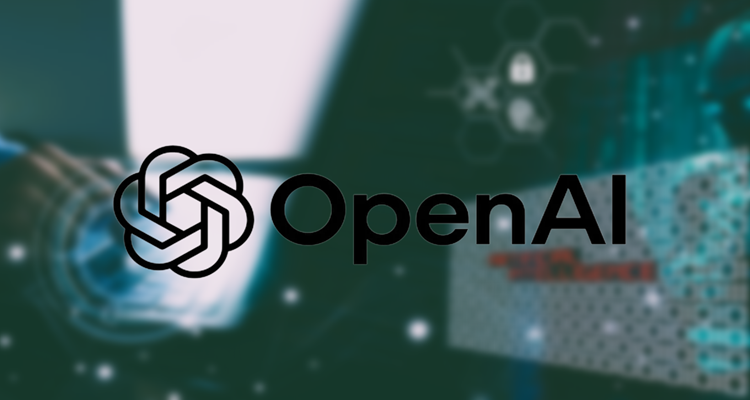OpenAI’s Advanced Voice Mode Gets a Human Touch in Latest Update
OpenAI’s Advanced Voice Mode update enhances ChatGPT’s AI voice feature, reducing interruptions and boosting personality for a more natural user experience.
A Voice That Listens: OpenAI’s Latest Leap Forward
In a world where artificial intelligence often feels like a blunt tool—rushing to respond before you’ve even finished your thought—OpenAI is taking a step toward something more human. On March 24, 2025, the San Francisco-based tech giant rolled out a series of updates to its Advanced Voice Mode, a feature that powers real-time conversations in ChatGPT. The goal? To make its AI assistant less of an impatient interrupter and more of a thoughtful conversationalist. Announced via a video by Manuka Stratta, an OpenAI post-training researcher, these changes signal a shift in how the company is refining its technology to meet user needs—and fend off a growing pack of competitors.
For anyone who’s paused mid-sentence only to have an AI barrel over their words, this update feels like a breath of fresh air. Free ChatGPT users can now enjoy a version of Advanced Voice Mode that respects their natural cadence, letting them think or breathe without the system jumping in. Meanwhile, subscribers across OpenAI’s paid tiers—Plus, Teams, Edu, Business, and Pro—are getting an even richer experience: fewer interruptions paired with a voice assistant that’s sharper, livelier, and more creative. It’s a small tweak with big implications, one that reflects OpenAI’s broader mission to bridge the gap between machine efficiency and human nuance.
Solving the Interruption Problem
Picture this: You’re chatting with a friend, pausing to gather your thoughts, and they cut in before you’re ready. Annoying, right? Until now, that’s been a hallmark of many AI voice assistants, including ChatGPT’s earlier iterations. Whether it’s a deep breath or a moment of reflection, users have grown accustomed to systems that mistake silence for a cue to respond. OpenAI’s latest update tackles this head-on, training its AI to recognize those natural breaks and hold back—a move that’s less about technical wizardry and more about understanding how people talk.
According to an OpenAI spokesperson speaking with TechCrunch, the upgraded voice assistant for paying users isn’t just quieter—it’s smarter. “It’s more direct, engaging, concise, specific, and creative in its answers,” they said. That’s a tall order for a machine, but early feedback suggests it’s hitting the mark. For free users, the change is simpler but no less impactful: the ability to pause without being steamrolled. It’s a subtle shift that could redefine expectations for AI interactions, proving that sometimes the best technology knows when to stay silent.
This isn’t just a quality-of-life fix—it’s a response to a real user pain point. A 2024 survey by Pew Research found that 62% of Americans who’ve used voice assistants cited “frequent interruptions” as a top frustration. OpenAI, it seems, has been listening.
A Personality Boost for a Digital Companion
Beyond cutting back on interruptions, OpenAI is injecting some soul into its voice assistant. For paid subscribers, Advanced Voice Mode now comes with a personality makeover—less robotic monotone, more dynamic flair. Think of it as the difference between a scripted customer service rep and a friend who’s quick with a witty reply. The update aims to make conversations feel less transactional and more organic, a nod to the growing demand for AI that doesn’t just answer questions but connects with users.
This push for personality isn’t happening in a vacuum. The AI voice space is heating up, with competitors like Sesame—a startup backed by Andreessen Horowitz and helmed by Oculus cofounder Brendan Iribe—grabbing headlines. Sesame’s AI assistants, Maya and Miles, recently went viral for their eerily natural tones, setting a high bar for what users expect from voice tech. Meanwhile, tech titans like Amazon are gearing up to launch an LLM-powered Alexa, promising a more conversational twist on its familiar assistant. OpenAI’s move feels like a strategic counterpunch, ensuring ChatGPT stays ahead in a race where sounding human is the ultimate prize.
Experts see this as more than a feature tweak—it’s a glimpse into AI’s future. “Voice is the next frontier for human-computer interaction,” says Dr. Emily Carter, a tech analyst at Stanford University. “Companies like OpenAI are betting that the more natural the conversation, the more indispensable their tools become.” With this update, OpenAI isn’t just keeping pace; it’s raising the stakes.
Why It Matters: The Voice Tech Revolution
The timing of OpenAI’s update couldn’t be more telling. Voice technology is no longer a novelty—it’s a battleground. From smart speakers to virtual assistants, the global voice recognition market is projected to hit $27 billion by 2026, according to a report by Allied Market Research. Consumers are driving that growth, craving tools that fit seamlessly into their lives. But as the market balloons, so does the pressure to stand out. OpenAI’s focus on reducing interruptions and enhancing personality isn’t just a user-friendly upgrade—it’s a bid to cement ChatGPT as the go-to voice assistant in an increasingly crowded field.
For free users, the update democratizes access to a smoother experience, a move that could widen OpenAI’s reach. Paid subscribers, meanwhile, get the premium treatment: an assistant that’s not only less intrusive but also more engaging—perfect for professionals, educators, or anyone who relies on ChatGPT as a daily companion. It’s a tiered approach that balances inclusivity with exclusivity, a hallmark of OpenAI’s business model since ChatGPT’s debut.
Take Sarah Nguyen, a small business owner in Austin, Texas, who uses ChatGPT’s voice mode to brainstorm marketing ideas. “Before, it’d cut me off mid-sentence, and I’d lose my train of thought,” she says. “Now, it feels like I’m bouncing ideas off someone who gets me.” Stories like hers highlight why these updates matter—they’re not just technical wins; they’re personal ones.
The Bigger Picture: AI That Feels Human
OpenAI’s latest move fits into a larger trend: the quest to make AI less alien and more familiar. As machines grow smarter, the challenge isn’t just what they can do but how they do it. A voice assistant that interrupts less and chats more naturally isn’t revolutionary on its own—but paired with ChatGPT’s vast knowledge base, it’s a potent combo. Add in the fact that OpenAI’s knowledge is continuously updated (no dusty cutoff dates here), and you’ve got a tool that’s as current as it is conversational.
Competitors aren’t sitting still, though. Sesame’s viral success shows that startups can disrupt with flair, while Amazon’s Alexa revamp looms as a heavyweight contender. OpenAI’s advantage lies in its scale and adaptability—millions of users already lean on ChatGPT, and updates like this keep them hooked. Still, the pressure’s on. If the company wants to stay atop the voice tech heap, it’ll need to keep evolving, one thoughtful pause at a time.
For now, this update is a win for users and a signal to rivals: OpenAI isn’t just playing the AI game—it’s rewriting the rules. As Dr. Carter puts it, “The line between human and machine is blurring, and voice is where it’s happening fastest.”
A Step Toward Smarter Conversations
OpenAI’s Advanced Voice Mode update isn’t just a patch—it’s a promise. By dialing back interruptions and dialing up personality, the company is making ChatGPT less of a tool and more of a partner. For free users, it’s a taste of smoother AI interaction; for subscribers, it’s a leap toward a voice assistant that’s as engaging as it is efficient. In a crowded field where every player is vying to sound human, OpenAI’s latest move stands out—not for its flash, but for its focus on what users want.
So, what’s next? Try it yourself—pause mid-sentence and see if ChatGPT waits. Or ask it for something quirky and watch its new personality shine. Either way, this update is a reminder: the future of AI isn’t just about being smart—it’s about feeling real. And in that race, OpenAI just took a confident step forward.
(Disclaimer: This article is based on publicly available information as of March 25, 2025, and reflects the author’s interpretation of OpenAI’s updates. Opinions and projections are for informational purposes only and do not represent official statements from OpenAI or other entities mentioned.)
Also Read: Reliance Eyes AI Future with OpenAI and Meta Talks











